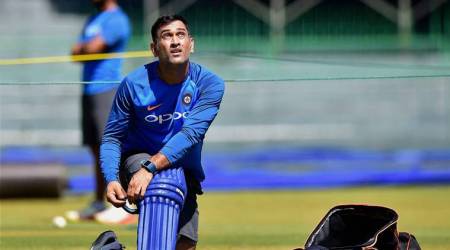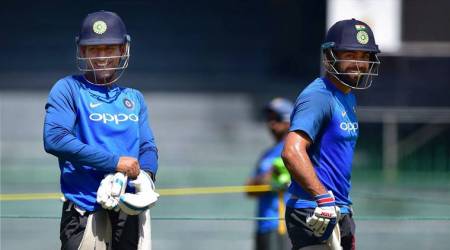 Lasith Malinga now wants to concentrate on movement in the air and off the deck. (Source: Reuters)
Lasith Malinga now wants to concentrate on movement in the air and off the deck. (Source: Reuters)
The 2007 Test series in England was historic for India. For the first time after 1986, they beat the hosts in Blighty. The series also proved to be a turning point in Jimmy Anderson’s career despite finishing on the losing side. Talking to Zaheer Khan and learning the intricacies of reverse swing gave the Lancastrian an X-factor. Last year, the England great was asked how he learnt about hiding the ball. “From Zaheer Khan. We found it really difficult to face (during the 2007 series),” the fast bowler had said.
That Anderson became India’s tormentor-in-chief, bowling reverse swing, during the 2012 series in the subcontinent is a different story, but Zaheer’s mentoring qualities are revered in Indian cricket and worldwide. Now Lasith Malinga seems to have joined the Zaheer ‘gurukul’, in a bid to last till 2023. A few days ago, before the start of the third one-dayer in Pallekele, the Sri Lankan legend, standing on the cusp of his 300th ODI wicket, sought out the former India bowler, who is here on a commentary stint. As Malinga would reveal, the discussion centred on his individual transition from a tearaway quick to a seam and swing bowler. “I’m ready to play until 2023,” he would say later.
At 34 years of age, Malinga can no longer bowl at 90mph steadily, especially after returning from an 18-month knee injury layoff. He now wants to concentrate on movement in the air and off the deck. And there’s a common thread between him and Zaheer in this regard. In 2000, when Zaheer made his international debut, he was a fast bowler who hit the bat pretty hard. He went through transitions, evolved continuously and finished as a craftsman. Malinga burst onto the scene in 2004 as Sri Lanka’s first proper fast bowler. Michael Holding has a simple definition for them: “the ability to bowl 90mph and above in all spells”. Malinga had that zip as a youngster. He retained his top pace until he was hit by the knee ailment towards the latter half of 2015.
 Another scalp and Lasith Malinga would reach the landmark of 300 ODI wickets. (Source: Reuters)
Another scalp and Lasith Malinga would reach the landmark of 300 ODI wickets. (Source: Reuters)
Now he is forced to change his style and has fallen back on his old friend Zaheer for advice. The two had a five-year association as bowling partners at Mumbai Indians. “Zaheer is more of a seam and swing bowler, and I want to learn more of that kind of thing over the next few years. That’s what I discussed with him,” the Sri Lankan quick said about his interaction with Zaheer.
Malinga has always looked at his journey as a continuous learning process. “He (Zaheer) is a legend of the Indian bowling attack in previous years. We always talk with so many bowlers around the world. When I meet them, I want to get their experiences also. Because they are in the commentary box, they look at every single one of my body movements and my bowling action, and how I swing the ball. They have a good idea of how I’m going now. Then, every time I have an opportunity, we speak about my bowling action, and how I have to improve,” said the veteran ahead of the fourth ODI against India that will see him lead the hosts in the absence of the injured Upul Tharanga and his replacement, Chamara Kapugedera. Tharanga will return to captain the side in the fifth and final game of the series.
Malinga admitted that he has cut down his pace but the ongoing fallow period notwithstanding, he still contributes to his team, as the leader of the bowling group. So when asked whether he still feels relevant, playing alongside the modern generation of cricketers, there was a hint of despondency. “I have played 14 years of international and franchise cricket. I have played (against) every other country and every single player in international cricket. Now I’m 34. My pace is cut down. If you (would have) asked me (this) 10 years ago, I wouldn’t have expected that. But whoever is coming towards the end of his career, there are failures. People talk about them not being fit enough, or not picking him.”
At the moment, Malinga is taking it step by step. After returning to the fold, the primary target was to bowl 10 overs and not break down. He now feels comfortable doing that. But wickets are not coming. He is going in this series at an average of 126.00, with only one wicket from three matches. Another scalp and he would reach the landmark of 300 ODI wickets. He said there was no special aim. More important, rather, would be his transition that can keep him in top-flight cricket for another six years.

